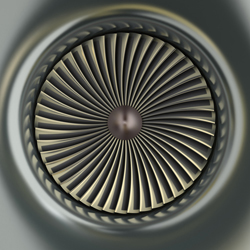Measuring up to potential
Instrumentation is a key generic technology that plays a role in the development, cost-efficiency and competitiveness of gas turbine products. The gas turbine environment poses a set of unique challenges to instrumentation, as the drive towards greater efficiency steadily increases temperature and pressure levels in engines. Since it is not possible to place existing sensors in the hottest regions of the turbine, outside measurements are used to model and estimate conditions inside it. However, inaccuracies can lead to compromised instrumentation capability, which holds back gas turbine engine development. This situation has also generated uncertainty in design methods and predictions of the lifetime span of components. The 'Accurate high temperature engine aero-thermal measurements for gas-turbine life optimisation, performance and condition monitoring' (Heattop) project addressed the need for improved instrumentation to be used in the design, development and performance monitoring of aero engines and industrial gas turbines for power generation. The EU-funded project's main objective was to develop accurate high temperature measurement technologies or sensors for measuring pressure, temperature and tip clearances. Project partners designed an advanced high-temperature thermocouple that permits measurements of temperature reaching as high as 1 200 degrees Celsius. One consortium partner developed and demonstrated fibre Bragg grating (FBG) sensors embedded in high-temperature components of gas turbines. Another project success was the development of a pyrometer: corrected/calibrated for transmission and fouling, this instrument is capable of self-inspection. Other Heattop achievements include development of a non-intrusive temperature probe for online real-time measurements of the turbine inlet temperature, and uncooled fast-insertion temperature and pressure probes capable of surviving in a gas turbine engine's hottest parts. Heattop outcomes allow knowledge to be gathered on temperatures and will prove very beneficial in improving on design and component life predictions, thus enhancing engine reliability.







